THE VOICE IN THE SILENCE
Raiford Rogers has been choreographing dance for over thirty years. He co-founded (with Victoria Koenig) the Los Angeles Chamber Ballet in 1981, known since Koenig’s departure as the Raiford Rogers Modern Ballet. He has designed everything from pop moves for superstars (he never tells for whom) to sophisticated classical compositions. A new piece based on Franz Schubert’s Piano Sonata No.18 in G major, Schubert’s Silence, premieres Saturday June 29 at the Luckman Arts Center. Preparing to interview Rogers, I did not realize that in a one-hour question and answer session he would, essentially, write the following essay ex tempore. – Jason Rohrer
RAIFORD ROGERS: In the last 20 or 30 years, the idea that one would choreograph to music went passé. A lot of choreographers, Merce Cunningham for instance when working with John Cage, felt that all sound – traffic, children yelling, everything – was like music. This was a great experimental phase, as when you had to be an abstract artist to get arrested as a painter. But for me, now, I think music and movement is part of our DNA. When the drum happened, the earliest people 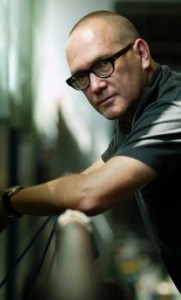 around the fire got up and danced. I don’t know the percentage of people who still listen to classical music, but I am attracted to it for many reasons – architecture, overarching ideas, the path. That’s what turns me on. Having said that, traditional dance can easily turn into the same old thing. I’m trying to find an authentic way to express the music that isn’t narrowed or defined by trends.
around the fire got up and danced. I don’t know the percentage of people who still listen to classical music, but I am attracted to it for many reasons – architecture, overarching ideas, the path. That’s what turns me on. Having said that, traditional dance can easily turn into the same old thing. I’m trying to find an authentic way to express the music that isn’t narrowed or defined by trends.
I was fascinated by Schubert’s Sonata in G, the basis of my new ballet, the first time I heard it. A lot of Schubert’s early work to me was frivolous, but when mortality’s in front of you (he was declining with syphilis when he wrote this), boy, your work gets profound. The elephant in the room, my double entendre, and the reason I call the piece Schubert’s Silence: there’s a lot of negative space in there. Pauses are a major part of the composition. But another reason is that, according to most sources, Schubert was gay. It was something you never admitted back then. So I called it Schubert’s Silence in regard to his personal life as well.
Musicians tell me, “You’re a choreographer for musicians.” They appreciate that someone has taken the time to listen. Right now in dance you have a lot of dancers doing amazing, impossible things, great physical feats. But a lot of it is dancers doing dances for other dancers, as jazz musicians do riffs to impress and inspire 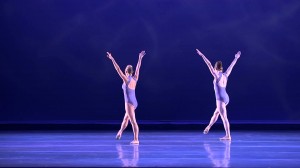 other musicians. I ask myself, when I fall in love with a piece, what any of that has to do with the music.
other musicians. I ask myself, when I fall in love with a piece, what any of that has to do with the music.
I’m interested in really paring things down, getting rid of anything unnecessary, losing familiar mannerisms. In contemporary ballet there are conventions that have sprung up – even in modern dance, there’s always an accepted way to do a turn, to do a fall and release. Sometimes a simple plié or a variation on a plié is exactly what a phrase or note of music is asking for. The problem is that so many choreographers are so beyond that plié – or at least, they see themselves as beyond that. But when I hear most music I don’t see someone spinning on his head.
I walk into the studio with every single step written, like a musical score. That doesn’t mean that it never changes. I wish to God I could tell you the clouds part and somebody kisses me on the forehead. But it’s a process. I’ll be taking a shower later and things come together. My first reaction to most music is superficial. When I hear a big cymbal crash, my first response is to jump up in the air. But that’s terrible. It’s too obvious. Maybe the crescendo in the music is found in a stillness 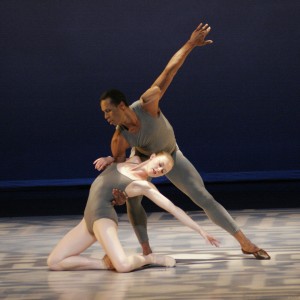 onstage. A writer needs a big eraser, and for me it’s the same. The problem is that we expect things to be instantaneous and fast. There’s no shortcut to doing good work. The artists that I admire, actors, choreographers, painters, have a commonality. It’s called rigor.
onstage. A writer needs a big eraser, and for me it’s the same. The problem is that we expect things to be instantaneous and fast. There’s no shortcut to doing good work. The artists that I admire, actors, choreographers, painters, have a commonality. It’s called rigor.
My dance has no enforced narrative or story: Beethoven once said about Bach, “Just play the notes.” When you simply play the notes well, then the thing that is authentic in you, your soul, is revealed even more than when you’re trying to over-interpret. When you’re just doing the steps, playing the notes as written, and playing them well, something magic happens.
When I’m listening to a great piece of music, and truly connected to that music, I’m not thinking of anything. What’s happening to me is that, at that second, everything seems to make sense. In the arms of someone you love: your anxiety and your questions are not relevant anymore. When you no longer have an agenda, when you’re no longer forcing anything, you go beyond. It makes sense on a more 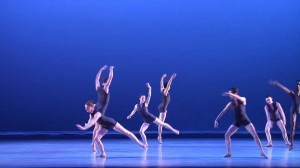 profound level. It’s when you get away from seeking assurance that things start to grow.
profound level. It’s when you get away from seeking assurance that things start to grow.
I remember Martha Graham saying, and Doris Humphrey said the same thing, that it takes several decades to find your voice. You develop a vocabulary of movement, as composers develop pet harmonies. Architects work with the same materials; artists with the same palette. You do need a construction system, because otherwise you’ll never get anything done. But as you mature artistically and personally, your standards get higher, so things get difficult. With every new ballet I do, I realize the process gets longer. I will write 20, 30, 40 solutions to a phrase of music before I say, “That’s right.” I don’t want to repeat myself or trap myself. I fall prey not only to what’s obvious but to my own solutions. But the majority of what you do, no 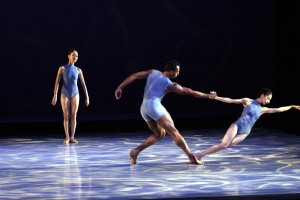 matter how hard you work, is not going to be great. You just have to get stuff out there or you’ll go in circles.
matter how hard you work, is not going to be great. You just have to get stuff out there or you’ll go in circles.
When I work on music video choreography, I know that for a celebrity singer to dance is frightening. Some are afraid to admit that they need help. But when you’re working on film you just want a second or two, brief shots; even if you tell me you can’t dance, I know there’s something you can do. This Schubert piece, though, is 27 minutes long. For that, it’s important to have trained dancers who can give me something back. And of course it’s important to do work that stretches my capacity. It doesn’t get any easier, and I always think that this is the last show for a while, but you keep going. What’s the other option?
Schubert’s Silence
Raiford Rogers Modern Ballet
Luckman Fine Arts Center at Cal State University LA
Saturday June 29, 2013 8:00PM
for tickets, call (323) 343-6600 or visit http://www.luckmanarts.org/
for more info on Raiford Rogers Modern Ballet,
visit http://www.raifordrogers.com/

